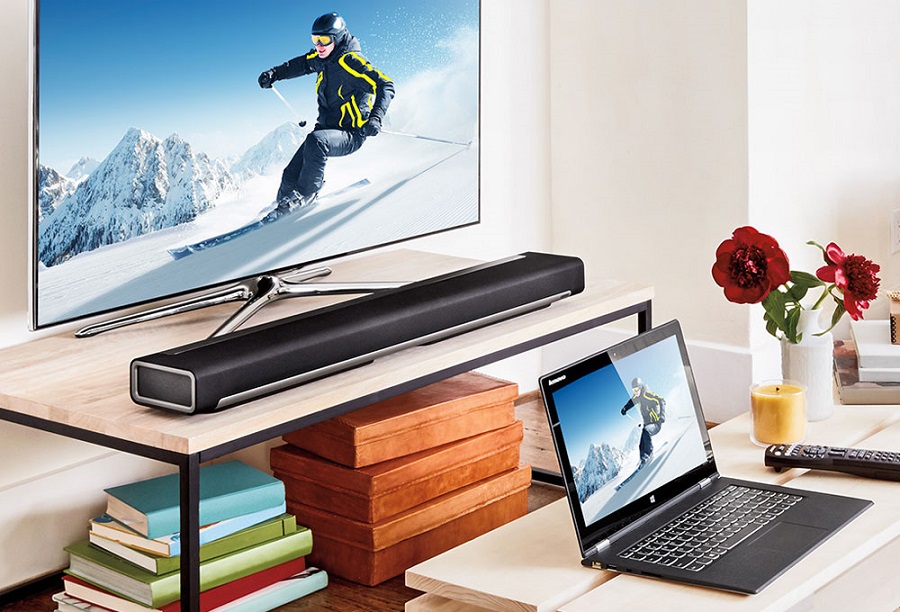Assuming you want to connect your laptop to your TV in order to watch movies or TV shows from your computer on the big screen, there are a few different ways you can go about doing this. In this article, we’ll outline the most common methods for connecting a laptop to a TV.
Table of Contents
The different ways to connect your laptop to your TV
There are a few different ways that you can connect your laptop to your TV. The most common way is to use an HDMI cable. This will allow you to connect your laptop to your TV and use it as a second monitor.
Another way to connect your laptop to your TV is to use a VGA cable. This will give you a lower quality image, but it will still work.
If you have a newer TV, you may also be able to connect your laptop using Wi-Fi. This is the easiest way to connect your laptop to your TV, but it may not be available on all TVs.
Finally, you can also connect your laptop to your TV using an S-Video cable. This will give you the best quality image, but it is also the most expensive option.
The pros and cons of each method
There are a few different ways that you can connect your laptop to your TV. Here are some of the most popular methods, along with the pros and cons of each:
1. HDMI Cable
HDMI is the most common method of connecting a laptop to a TV. It’s simple, reliable, and provides a high-quality picture. The main downside of HDMI is that it requires a physical cable connection between your laptop and TV. This can be inconvenient if your devices are not close together.
2. Wireless HDMI
Wireless HDMI systems use an adapter that plugs into your TV and sends the signal wirelessly to your laptop. This is a great option if you want to avoid having to deal with cables. The downside is that wireless HDMI can be more expensive than a standard HDMI cable, and the picture quality may not be as good.
3. Chromecast
Chromecast is a popular option for streaming content from your laptop to your TV. It’s easy to set up and use, and it doesn’t require any extra cables or adapters. However, Chromecast only works with certain apps and services, so you’ll need to make sure that your favorite content is available before you decide to
How to choose the best method for you
There are a few different ways that you can connect your laptop to your TV. Each method has its own set of pros and cons, so it’s important to choose the one that’s right for you.
HDMI is the most popular method for connecting a laptop to a TV. It’s easy to do and it gives you the best quality picture. The only downside is that not all laptops have an HDMI port.
If your laptop doesn’t have an HDMI port, you can use an adapter to connect it to your TV. There are a few different types of adapters, so be sure to choose the one that’s compatible with your laptop.
Another option is to use a wireless connection. This is great if you want to be able to move around the room with your laptop while still being able to watch TV. However, it can be more expensive than other methods and the picture quality isn’t always as good.
No matter which method you choose, connecting your laptop to your TV is easy and convenient. With so many options available, you’re sure to find the perfect one for you.
Tips for getting the best connection
When it comes to connecting your laptop to a TV, there are a few things to keep in mind to get the best connection possible. First, make sure that your laptop and TV are compatible with each other. Second, use the right cables to connect your laptop to your TV. Third, adjust the settings on your laptop and TV to get the best picture quality.
Here are a few tips to keep in mind when connecting your laptop to your TV:
1. Make sure that your laptop and TV are compatible with each other. The last thing you want is to go through all the effort of connecting your laptop to your TV only to find out that they’re not compatible. Do some research ahead of time to make sure that everything will work together.
2. Use the right cables to connect your laptop to your TV. There are a variety of different cables that can be used for this purpose, so make sure you have the right one. If you’re not sure which cable you need, consult a professional or look up the specifications for your particular model of laptop and TV.
3. Adjust the settings on your laptop and TV to get the best picture quality. This includes things like adjusting the resolution and making
Conclusion
With technology becoming more and more advanced, it’s now easier than ever to connect your laptop to your TV. Whether you’re wanting to watch a movie on the big screen or share a presentation with colleagues, all you need is the right cables and adapters (and maybe a little bit of know-how).


